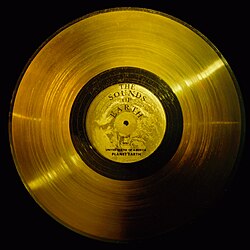-
3
- #1
Voyager 1 is officially in interstellar space.
This is so much more than a neat factoid found on page 6 of tomorrow’s paper; this is a profound accomplishment of humanity.
If there is one trait that can be said to define humans, in every period of history and geographic location, it is that we are deeply and innately curious. We are driven to explore all that we can, in both a physical and epistemic sense. We owe all that we have and all that we are to the fruitful results of our inquisitive endeavours. And although the inertia of modern comforts may squelch this urge to some extent, it can never fully extinguish it.
We should duly celebrate when new frontiers are reached as a triumph, not just of individuals, but of our species. This, the emancipation of the first human-made object from our solar system, is a truly extraordinary feat that underscores the very best characteristics of humanity; collaboration, ingenuity and curiosity.
As is becoming rather cliché for people that know me, I’ll leave with a few quotes from Carl Sagan (Pale Blue Dot):
“Each Voyager is itself a message. In their exploratory intent, in the lofty ambition of their objectives, in their utter lack of intent to do harm, and in the brilliance of their design and performance, these robots speak eloquently for us.”
“In five billion years [estimated life span of the Voyager spacecraft], all humans will have become extinct or evolved into other beings, none of our artifacts will have survived on Earth, the continents will have become unrecognizably altered or destroyed, and the evolution of the Sun will have burned the Earth to a crisp or reduced it to a whirl of atoms. Far from home, untouched by these remote events, the Voyagers, bearing the memories of a world that is no more, will fly on.”
This is so much more than a neat factoid found on page 6 of tomorrow’s paper; this is a profound accomplishment of humanity.
If there is one trait that can be said to define humans, in every period of history and geographic location, it is that we are deeply and innately curious. We are driven to explore all that we can, in both a physical and epistemic sense. We owe all that we have and all that we are to the fruitful results of our inquisitive endeavours. And although the inertia of modern comforts may squelch this urge to some extent, it can never fully extinguish it.
We should duly celebrate when new frontiers are reached as a triumph, not just of individuals, but of our species. This, the emancipation of the first human-made object from our solar system, is a truly extraordinary feat that underscores the very best characteristics of humanity; collaboration, ingenuity and curiosity.
As is becoming rather cliché for people that know me, I’ll leave with a few quotes from Carl Sagan (Pale Blue Dot):
“Each Voyager is itself a message. In their exploratory intent, in the lofty ambition of their objectives, in their utter lack of intent to do harm, and in the brilliance of their design and performance, these robots speak eloquently for us.”
“In five billion years [estimated life span of the Voyager spacecraft], all humans will have become extinct or evolved into other beings, none of our artifacts will have survived on Earth, the continents will have become unrecognizably altered or destroyed, and the evolution of the Sun will have burned the Earth to a crisp or reduced it to a whirl of atoms. Far from home, untouched by these remote events, the Voyagers, bearing the memories of a world that is no more, will fly on.”


